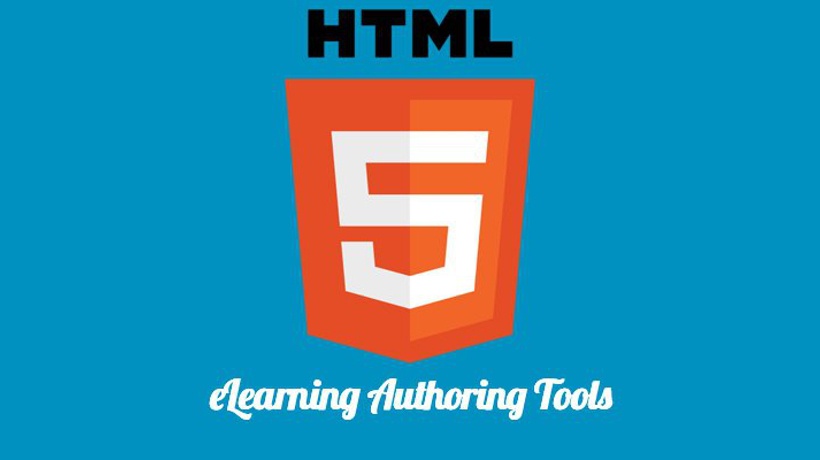Everything the HR professional needs to know about HTML5 in 600 words
- Historically most eLearning has been created using Adobe Flash. It’s a mature and very widely used technology. But critically, it doesn’t work properly on many mobile devices such as smartphones and tablets and last year Adobe bowed to the inevitable and announced it was giving up completely on its mobile Flash player. Mobile devices are becoming increasingly prevalent as business tools, so Flash-based learning risks becoming obsolete, so if your library of eLearning is produced with Flash then you probably have a major problem looming.
- HTML5 is widely used for presenting content on the Web. It’s useful for eLearning because it now includes support for rich media, graphics and interaction. Crucially, it works well across modern browsers such as Internet Explorer (IE) 9/10, and up to date versions of Safari, Google Chrome and Firefox. Most importantly it has very good support on modern mobile devices – it works on smartphones and tablets.
- However, if you also need to distribute eLearning to older browsers such as IE 6, 7 and 8 (and many organizations still do) then it won’t work, and you need eLearning that is able to gracefully fall-back to use a different technology (such as core HTML and JavaScript or Flash) so that the same course can run unaltered on older browsers as well. Note the emphasis on “the same”. You definitely do not want to create, manage and maintain two versions of a course so the fall back has to be automatic and completely transparent to learners. If your learners use older browsers, check that your eLearning supplier has this dual delivery capability built into their courses – and test it rigorously to ensure it works!
- Flash development tools are mature and Flash skills are widely available. This means that nice graphics, interactions and animations are easier to produce and there are lots of experienced Flash developers out there. Skilled HTML5 resources are in shorter supply, so think about the proven practical experience of your chosen supplier (you don’t want to be paying for their learning curve). If you are using internal resources think through your recruitment and re-training approaches.
- Finally, you will want to take advantage of the most important benefits of the mobile world such as enabling mobile learners to consume HTML5 courses and other digital learning resources offline as well as online. Your users will therefore need some sort of App resident on their mobile which enables them to search, store, organize and consume content wherever they are. You can even SCORM track their learning results whilst they are offline, re-synchronising later. Depending on the quality of the user experience you need, you can choose between a cheaper HTML5 Web App that will work reasonably well across a wide range of devices, or a higher quality “native” App designed for use on a specific operating system (e.g. iOS, Android or Windows 8). Native Apps enable you to provide a much slicker user experience and tap into the underlying capabilities of the mobile device in ways that are not possible with Web Apps. You pays your money and you takes your choice here!
Conclusion:
Investment in new eLearning is expensive. You want your learning materials, eLearning courses, performance support tools and ancillary resources to be as accessible as possible and as long lived as possible, so yes the technical format you choose does matter. You also want your learners to enjoy using your materials, so don’t forget to think about the App experience and how that can encourage users to want to use and adopt your training resources.
Everything the IT professional needs to know about HTML5 in 600 words
- Hypertext Mark-up Language (HTML) is now in its fifth revision, as of December 2012 it’s a W3C Candidate Recommendation. It can’t be used on its own for animation and interactivity and is supplemented with JavaScript and CSS3. HTML5 is often used as a nebulous shorthand term to represent all three.
- The aim is to provide a comprehensive application development platform for web pages, supporting media playback without any reliance on third party plugins (e.g. Java and Flash). HTML5 provides support for 2D (and 3D) graphics (via the new <canvas> element), drag and drop, audio and video (via the new <audio> and <video> elements), local storage (referred to as Web storage), mathematical formula support via MathML, and quite a lot more besides.
- Full HTML5 browser support is patchy with different browsers providing different levels of support – although all the major browser developers are fully committed to improving their support as the standard evolves and matures. Today, this makes using HTML5 challenging particularly for interactive and media rich eLearning, in comparison to Flash, where the playing field is level thanks to the Flash browser plug-in available on all desktop browsers including old ones such as Internet Explorer (IE) 6. So more rigorous cross-browser testing is needed for HTML5-based eLearning and where older browsers need to be supported, alternative fall back mechanisms are required. For example, the HTML output that we produce from our Luminosity tools utilizes FlashCanvas as an alternative to the HTML5 <canvas> element in older versions of IE, where <canvas> is not supported. The fall back to these alternate approaches on older browsers is performed at run time, so is completely transparent to the end user. So crucially, the course is created once and is available to learners using IE6/7/8/9/10 or the latest Safari, Google Chrome or Firefox – a very powerful solution.
- Animations, graphics and interactions are easier to create in Flash – mainly because the product has been around for a long time and has lots of mature tools associated with it. HTML5 tools lag behind, whilst they will catch up, today these media elements will take longer and be fiddly to create.
- Apps are increasingly used to deliver digital learning content to mobile phones and tablets, enabling offline content consumption, which of course is one of their main benefits. Common choices here include the use of HTML5 Web Apps which are able to run across different mobile platforms, versus native Apps developed using platform specific SDKs (my preference). The attraction of building a cheap App once for multiple platforms – iOS, Android, Windows, etc is obvious, but it’s extremely difficult to produce slick, reliable Apps that provide a quality and consistent user experience across devices and they can’t utilize many of the neat underlying platform and device capabilities. I know of several high profile examples of large organizations going down the generic HTML5 Web App route (e.g. Facebook and LinkedIn) only to find that the user experience suffered unacceptably so they reversed their thinking and built native Apps. We can build both types of Apps, but in my view it’s essential that they deliver a great user experience (and this is what your users will expect) and this requires a native App solution for all but the most basic Apps.
Conclusion:
If you want to support your HR and Learning and Development colleagues, then it’s all about maximizing reach, supporting a wide range of device types (with BYOD featuring highly on many companies’ agendas) and future proofing the content. Alongside this, choosing the right App strategy from the start is vital to avoid rework and delay.








